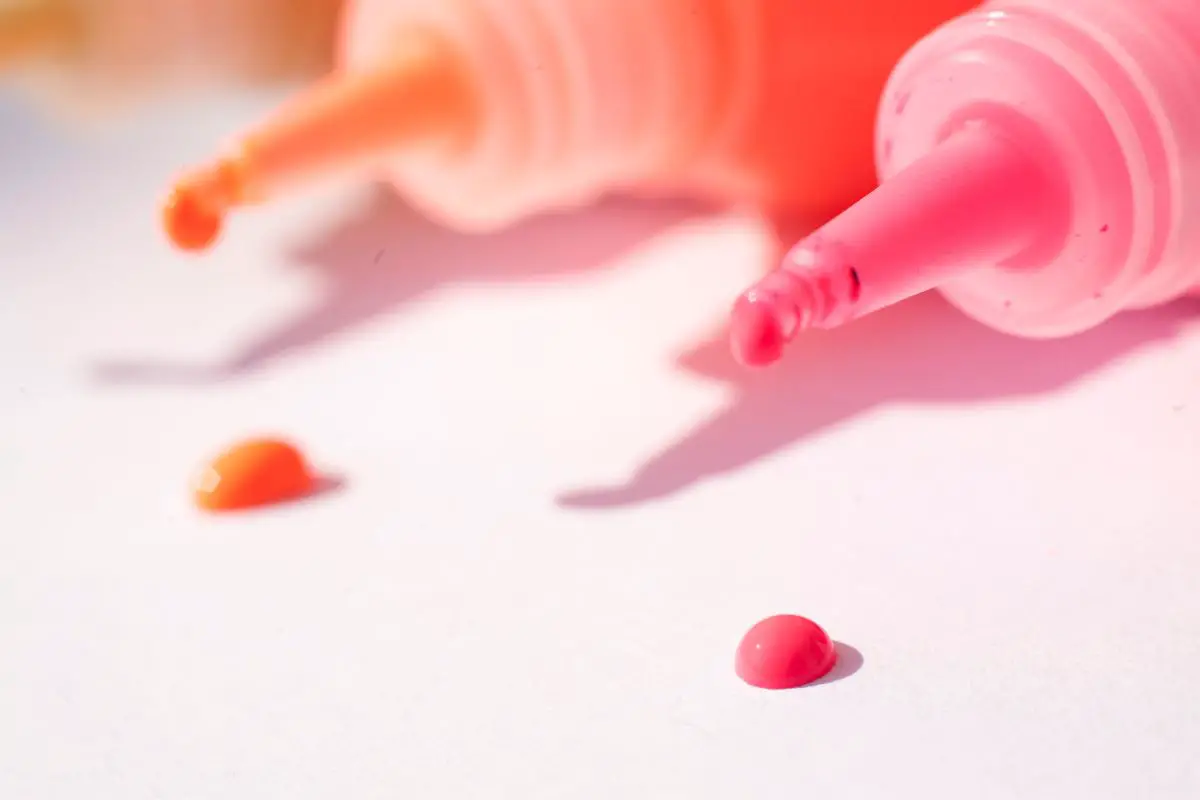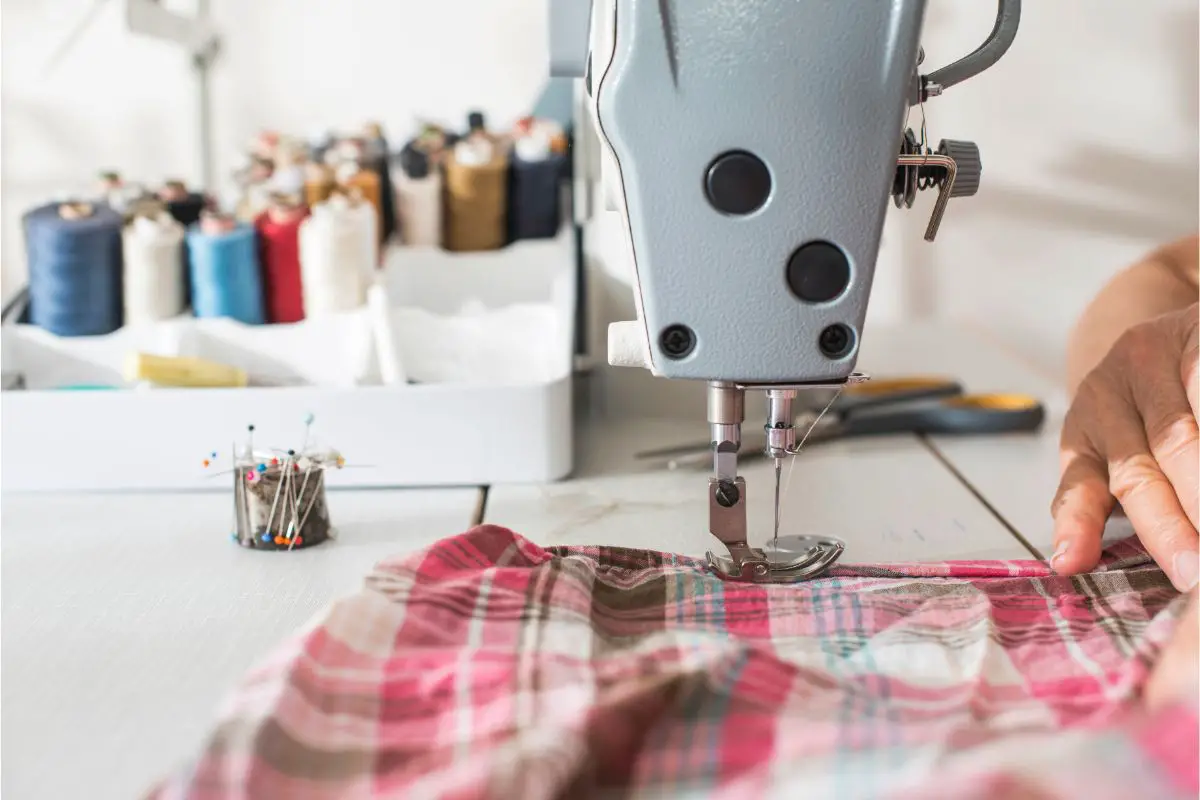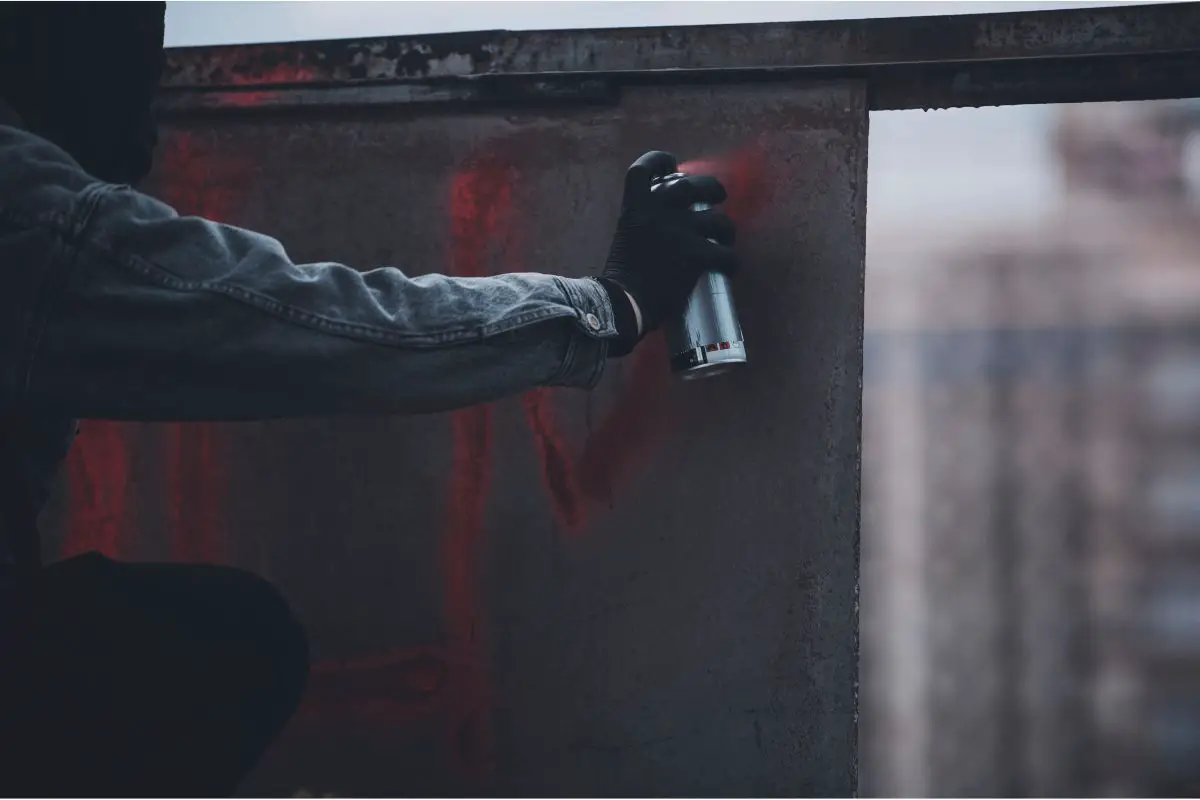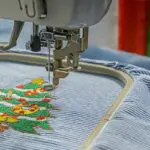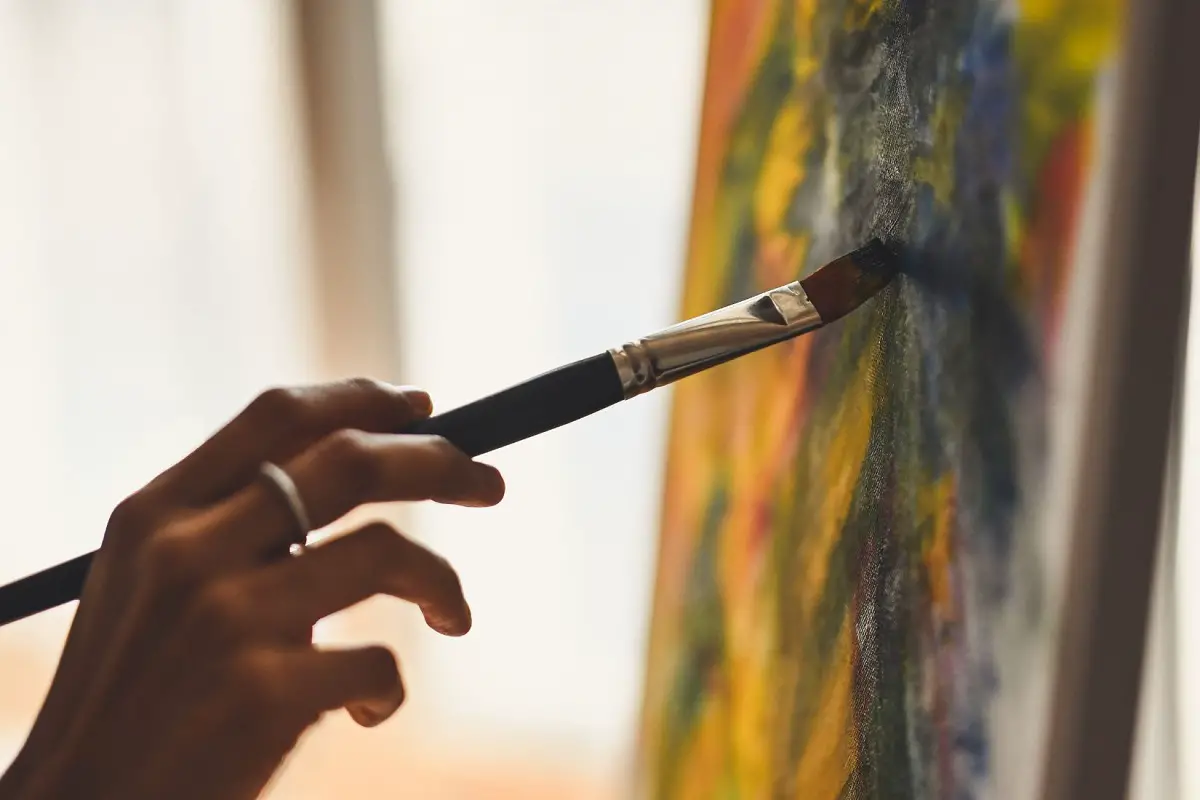Acrylic paint is one of the most popular types of paint out there, thanks to its versatility. After all, it can be used on so many different materials, and it’s great for painting on a canvas with.
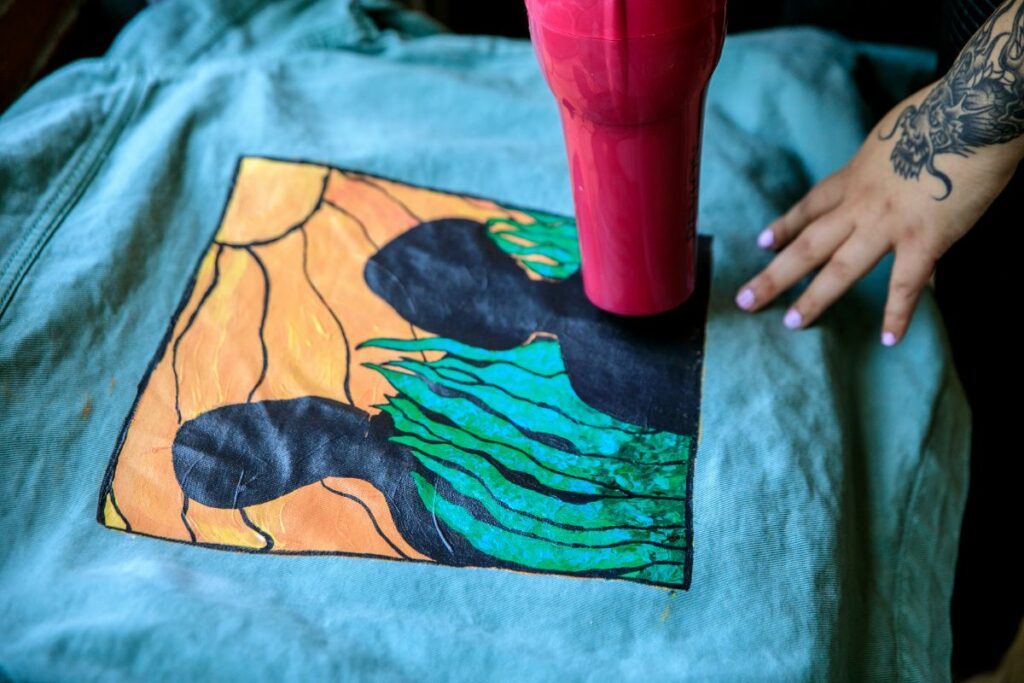
However, can acrylic paint be used on fabric? Canvas itself is really a plain-weave fabric, but will the paint work on regular fabrics too?
The short answer is yes, acrylic paint can be used on fabric. However, the paint isn’t going to last too long on fabric unless you follow a specific process.
This process involved preparing the fabric first with a medium, and then sealing the acrylic paint with a special heat-setting process to ensure it looks the best it can. Only then will the acrylic have a chance of lasting on your fabric!
It sounds like a complicated process, but it really isn’t! In our handy guide below, we’re going to explain how you can use your acrylic paint on fabric, with detailed breakdowns of both how to paint and seal.
Additionally, we’ve got extra tips on the process, as well as some advice on the best acrylics to use. Read on!
Can Acrylic Paint Be Used On Fabric?
As we touched on in the intro, you can use acrylic paint on your fabric (see also “How Washable Is Acrylic Paint On Different Surfaces?“), but the fabric has to be specially prepared beforehand with a medium.
On top of that, you’ll want to seal the paint afterwards in order to have your painted fabric look the very best it can.
Why Would You Want To Paint Fabric?
Painting fabric is a common process done by many people – for many different reasons. After all, it allows you to customize different objects with designs of your choosing.
As a result, some of the most commonly painted fabrics include shirts, shoes, pillows, cushion covers, upholstery, and even things like tote bags (see also “How To Make A Bingo Bag“).
Customizing these objects helps to make them a better and more personal reflection of yourself.
For example, loads of people wear customized painted shirts, covering them with designs referencing things they like or painting them in color schemes that reflect their personality.
Is There Special Paint For Fabric?
Since you need to take some special steps in order to get acrylic paint to properly last on fabric, you might be wondering whether there’s a special paint developed especially for use on fabric. Well, there is!
Fabric paint is a blend of fabric dye and binder, with the binder helping the dye to properly stick to the fabric.
As a result, the fabric paint does the job immediately, and you don’t have to use the fabric medium or a heat-setting sealing process.
This sounds like a brilliant and much-simpler alternative to going through the whole acrylic paint process.
However, there is a catch! Fabric paint will only work on natural fibers. This means that if you’re trying to paint on synthetic fabric, then you’ll have to use another paint – like acrylic.
What Type Of Acrylic Paint Works Best On Fabric?
There are loads of different types of acrylic paint out there, so you’ll naturally be wondering which is going to be the best for painting on fabric.
Well, when searching through the different types, you should check the bottle to see if they say they’re suitable or best for fabric and other similar surfaces.
Regular acrylic paint is a good pick! Make sure that you avoid any washable acrylics, because they won’t last, even if you’re using the medium and heat-setting process.
Do You Need To Use A Medium To Paint Fabric With Acrylic?
Unfortunately, if you want the acrylic paint to properly work on the fabric and last, then you will need to use the fabric medium.
If you don’t use fabric medium, then the acrylic paint will simply peel or crack after a while, ruining the design of your fabric.
With that being said, this is only really the case if you’re painting a fabric piece of clothing. If you’re painting on some fabric decorations or a fabric art piece, then you may be able to get away without using a medium.
Of course, if you really wanted to skip the medium and still paint on some fabric clothing, then you could just use fabric paint instead of acrylic.
What Is Fabric Medium?
Fabric medium is a special formula which is mixed carefully with your acrylic paint in order to help it adhere to the fabric and last.
How does it do this? Well, the fabric medium makes it so that the acrylic paint is more flexible after it has dried, which lets it bend and move with the fabric without cracking or peeling.
If it hasn’t been mixed with a fabric medium, acrylic paint goes hard when it dries, which makes it very susceptible to cracking.

Additionally, if you wash the fabric shirt, acrylic that hasn’t been mixed with a medium will simply chip away completely.
The medium makes your acrylic more flexible because it dilutes it, making it a lot thinner and therefore more flexible.
This makes it much better for the fabric clothing to absorb, which means the paint stays adhered to it a lot better.
You can get mediums for all different types of textiles, and fabric is just one of them. On top of that, the fabric mediums can vary depending on what types of paint you’re going to be mixing them with.
Since we’re going to be dealing with acrylic paint, you’ll want to get an acrylic fabric medium.
Are There Alternatives To Fabric Medium?
If you can’t get your hands on a fabric medium for your acrylic paint, you might be wondering if there is an alternative you can use that has a similar effect.
Thankfully, you can actually make your own homemade fabric medium. Even better, this is pretty easy to do! Just use the following steps.
To make homemade fabric medium, you’ll need vinegar, glycerine, and water.
First, prepare a mixture of vinegar with an equivalent amount of glycerine, then adding 2 parts of water in too.
Once you’ve got that mixture, you can add it to the acrylic paint. Add as much or as little as you want until the acrylic has your desired consistency.
How Do You Prepare The Fabric Before Painting?
Before you’re going to be able to paint your fabric with acrylic paint, you’ll need to prepare the fabric specially, and this includes ideally preparing the paint with the medium too.
Step One: Wash The Fabric
To begin with, wash your chosen fabric.
This is done for a number of reasons, one of them being that it will remove any dust or unwanted mess from the shirt that could otherwise hinder the acrylic paint from sticking to the material securely (see also “Embroidery Removal Guide: Salvaging Shirts And Other Garments“).
On top of that, washing the fabric will help the material to keep its original form, without having it stretch or shrink and affect the painting.
Step Two: Iron The Fabric
After you’ve washed the fabric and let it dry, you need to iron your fabric clothing too. This is to get any wrinkles and creases out of it, because those misshapen parts will make it difficult to paint your acrylic on.
Step Three: Prepare Your Paint And Medium
It’s a good idea to have your paint and medium prepared before you start, just to save you time later on in the process. Get your fabric medium and your regular acrylic paint, then mix them together properly.
Step Four: Stopping Spread
Finally, those who are painting a fabric shirt will want to slip a reasonably-sized piece of cardboard inside your shirt.
This will help to absorb any paint that comes through the top side, and stop it from reaching the back of your shirt and ruining it.
How Do You Paint Fabric With Acrylic Paint?
Finally, it’s time to paint your fabric with acrylic paint! There are a few steps to this process, but it should be easy if you follow them closely.
Step One: Getting Your Materials
To begin with, you’ll need to ensure you have all the tools and materials. You’ll require:
- Water
- A paintbrush
- A sponge
- Acrylic paint
- Fabric medium
- Stamps
- Stencils
Step Two: Picking Your Fabric
With your materials all ready, it’s time to pick what type of fabric you’re going to be working with. Since you’re going to be using a fabric medium, you’ll be able to select either synthetic fibers or natural fibers.

Think about the texture of the fabric that you’re picking. If the texture is rough, then it might make the painting harder to do, while something softer and smoother will make painting a breeze.
Additionally, consider the color of your fabric and how it will work with the color of your acrylic paint.
With a plain fabric color, the paint is going to be more visible and really stand out. With a darker fabric, your paint is going to have to work harder.
Step Three: Preparing Your Work Station
With your fabric chosen, it’s important that you carefully prepare your work area, preventing it from getting messy and protecting your health.
Since paint spreads easily, you’ll want to put down bits of old newspaper on the floor and around where you’re working. Additionally, you’ll need to put on some protective gear and clothing.
On top of that, you need to make sure that the area is well-ventilated for your health and safety. Acrylic paints can be dangerous, because they are toxic when drying, and they even release formaldehyde – which can cause cancer.
As a result, you need to make absolutely sure that your working area has proper ventilation and air flow.
Step Four: Planning And Practicing Your Design
Everybody is going to be working with a different design, and it’s one that you’re going to want to do justice.
As a result, you’ll want to plan your design thoroughly before you follow it. This is especially necessary because the acrylic will stain the fabric in an irreversible way, so you can’t make mistakes.
While planning your design, consider the materials you’ll need to bring it to life.
For example, you might want to use stencils to help you authentically replicate it, or even some painter tape to give a helpful outline for you to follow.
Additionally, it’s a good idea to practice your design. Try painting it on some old paper, or even do it on a canvas. Practice makes perfect, and should prepare you to do a flawless rendition of it on the fabric.
Step Five: Preparing The Paint And Medium
If you haven’t already prepared your paint and the fabric medium, then it’s time to do that. In fact, it can be a good idea to do this just before painting.
In order to properly mix the medium with your acrylic paint, follow the instructions on the medium bottle. Each medium can differ, so only follow your instructions, which should tell you the right way to combine the two elements.
If you’re mixing different colors of acrylic paint in order to get a specific shade that you want for your design, then do this before you add your medium to the paint.
Alternatively, you might be using the homemade fabric medium. To do this, simply follow our instructions from before, using equal parts of vinegar and glycerine, along with two parts of water.
Then add that medium to your paint until you get your desired consistency.
On the other hand, you might just be using fabric paint, which works without any of this kind of preparation.
Step Six: Painting
With everything prepared, it’s finally time to paint! You’ll want to paint in a layered manner, layering your colors one over the other, and letting each layer dry before you add another.
What you paint first is up to you. You can begin with painting the background, or you can focus on painting any dark parts of the design. Either way, make sure your brushstrokes are neat and the overall paint job isn’t bumpy.
Step Seven: Using A Printing Block (Optional)
If you want, you can use a wooden printing block and a sponge to apply your paint.
To do this, you’ll still need your combination of acrylic paint and fabric medium, then pour some of the paint onto a clean sponge. This will be your pad for stamping paint!
Next, take your wooden printing block and press it into the sponge’s paint, checking the paint colors properly distribute. If they do, you can begin printing the paint onto your fabric.
Step Eight: Drying
Once all your painting has been done, it’s time to let the paint dry. Remember that acrylic paint dries toxic, and so you need to be absolutely careful of your health and safety when it’s drying.
As a result, make sure the paint is drying in a well-ventilated space, and try to keep away from it too.
Once the paint has dried, you’ll want to seal it with a heat-setting process, which we’re about to cover.
How Do You Seal The Acrylic Paint Onto The Fabric?
Painting your acrylic and medium mixture onto your fabric clothing will do a good enough job, but if you really want the paint to last on that shirt then you should seal it on with a heat-setting process.
This process involves applying heat to your fabric, which helps the textile fibers in it to absorb the paint a lot quicker, and then the paint seals in a way that will help it last.
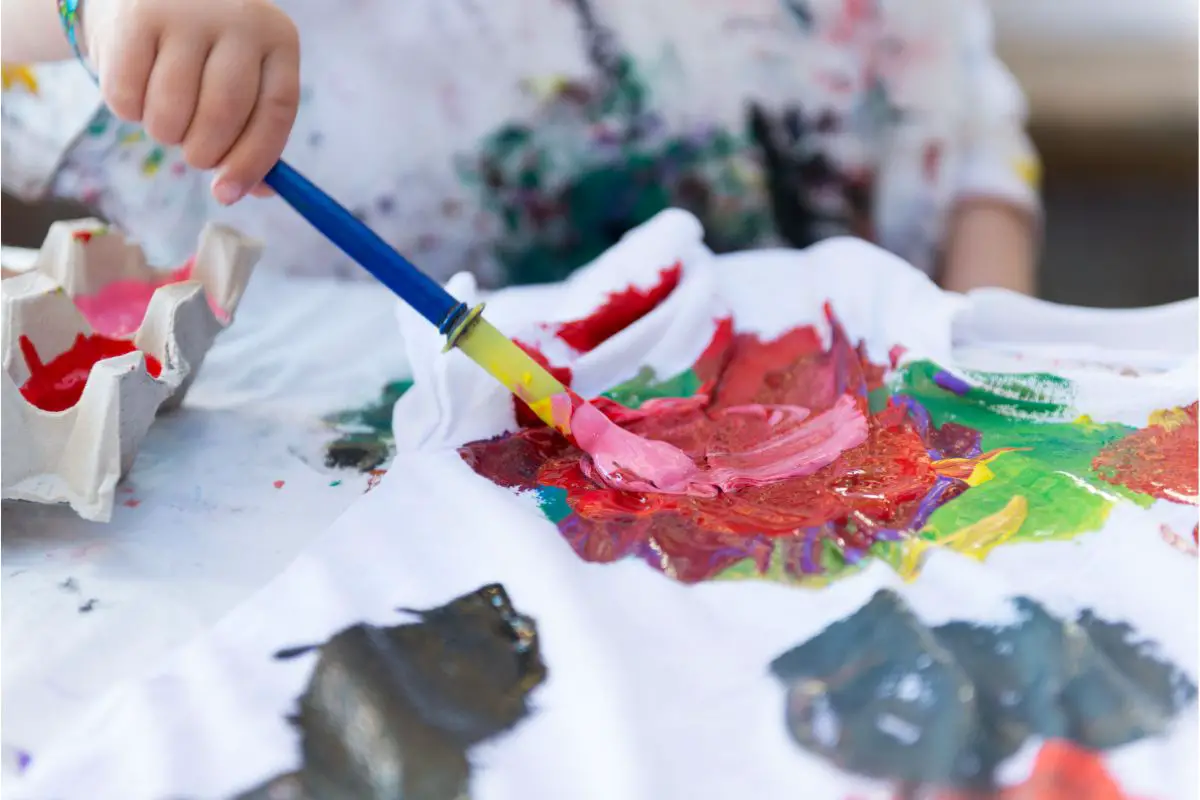
However, if you’ve used fabric paint instead of the mixture of acrylic and a medium, then you won’t have to heat-set at all.
Step One: Getting Your Materials
First things first, you need to get the right supplies. Thankfully, heat-setting is easy and requires very few! All you’ll need is:
- A dry iron
- An ironing board
- Pressing cloth
Step Two: Adding Your Pressing Cloth
After you’ve got your tools, take your pressing cloth and put it atop your painted design so that it covers all of the paint. After that, flip your cloth over. This step will help prevent color spreading onto the iron and ironing board.
Step Three: Ironing
Put your iron on a medium-hot option and wait while it heats up. Make sure your iron’s steam setting is also switched off.
Put your fabric on your ironing board, then iron on top of your pressing cloth. Move from section to section, only ironing each section for 10 seconds, but covering them properly.
Keep ironing for about 3-5 minutes, or right up until you can see the paint has set. After that, let the fabric cool down completely. Don’t touch it until it has done – you’ll hurt yourself!
Why Is My Fabric Stiff After Painting?
When you’ve painted your fabric, you might find that the fabric feels really stiff now. This will likely be the case if you’ve used fabric paint to do the job, or you’ve tried using something like gouache paint.
If you use the mixture of acrylic paint and fabric medium, then you should find that the fabric doesn’t go as stiff. This will only be the case, though, if you’ve mixed them thoroughly, following the instructions on the medium bottle.
Additionally, the heat-setting process that we explained earlier helps to soften painted fabric, making the material a lot less stiff after painting.
How Can I Protect My Acrylic Painted Fabric?
Though not a difficult process, the path to properly having your fabric painted with acrylic is one that takes time and effort.
As a result, you’ll want to protect your fabric as much as you can, and there’s thankfully a few steps you can follow to do that.
For one, you should wash your fabric as little as possible. We all know what washing can do to a printed shirt design, and so washing the bare minimum is a solid way to protect your paintwork.
Additionally, make sure that you don’t wash the fabric within 4 days of you painting it.
On top of that, when you do need to wash the fabric, you should do so by hand. Be gentle and use cool water to do it. If you must use a washing machine, use only the gentle cycle.
Finally, when your fabric has been washed, don’t put it in your machine dryer. Instead, hang it up and leave it to air dry. Similarly, if you’re going to iron the fabric, iron its reverse side and do so with a low setting.
Can You Heat Dry Acrylic Paint?
If you want to try heat drying the acrylic paint, you need to leave it to air dry first for a minimum of 24 hours, when you can then iron it.
After that, you can use a (low setting) hair dryer to help it dry more quickly, moving it across the fabric evenly.
What Is The Best Fabric Medium?
There are plenty of fabric mediums available for you to choose from, but we would recommend Delta Creative’s Textile Medium to do the job well.
This is a non-toxic formula that you can mix with your acrylic paint, and it then penetrates the fibers of the fabric in order to help keep the paint stuck to them.
Even better, when the acrylic mixture has dried, the paint becomes quite flexible, so that once the fabric has been air dried sufficiently you can machine wash it.
What Is The Best Acrylic Paint?
Similarly, there are loads of acrylics to choose from. We recommend the gloss set from Apple Barrel, which gives you an impressive 16 different shades of acrylic, perfect for your design.
Each of these acrylic paints is non-toxic, and you’ll find that they’re shiny and glossy when they’re dried on your fabric, giving the material a real luster.
Final Thoughts
There you have it! Acrylic paint can be used to paint on fabric, but you’ll need to first mix it with a medium, and then you should heat-set it so that it actually stays on (see also “Acrylic Paint VS Water-Based Paint“).
- How To Sew Fabrics Together - June 5, 2023
- How Many Stitches Per Inch? - June 5, 2023
- How Long Does It Take To Sew A Dress? - June 5, 2023


